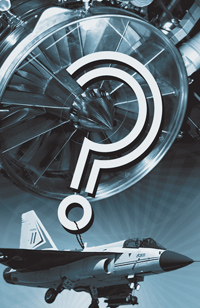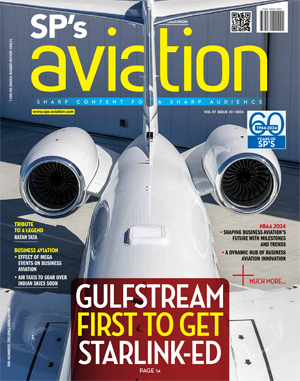INDIAN ARMED FORCES CHIEFS ON OUR RELENTLESS AND FOCUSED PUBLISHING EFFORTS

SP Guide Publications puts forth a well compiled articulation of issues, pursuits and accomplishments of the Indian Army, over the years

"Over the past 60 years, the growth of SP Guide Publications has mirrored the rising stature of Indian Navy. Its well-researched and informative magazines on Defence and Aerospace sector have served to shape an educated opinion of our military personnel, policy makers and the public alike. I wish SP's Publication team continued success, fair winds and following seas in all future endeavour!"

Since, its inception in 1964, SP Guide Publications has consistently demonstrated commitment to high-quality journalism in the aerospace and defence sectors, earning a well-deserved reputation as Asia's largest media house in this domain. I wish SP Guide Publications continued success in its pursuit of excellence.
Kaveri in a spin again

NEWS
India’s efforts to develop a combat aircraft engine have hit yet another air pocket. For entirely different reasons, both the Russians and the Indian Air Force (IAF) are reportedly unhappy with the Technical Evaluation Committee’s (TEC) decision to elect French engine house Snecma as Gas Turbine Research Establishment’s (GTRE) partner to co-develop the long delayed Kaveri engine. After deliberating over the proposals sent by Snecma and the Russian engine giant, NPO Saturn, for more than two years, the K.V.L. Rao-headed TEC recently declared that Snecma better met the GTRE’s requirements, thereby eliminating the Russians from the race.
VIEWS
The Kaveri, to refresh memories, is being developed by GTRE to power the indigenous Light Combat Aircraft (LCA), Tejas. The programme was conceived in tandem with that relating to the Tejas in the early 1980s for India to develop and produce its own state-ofthe-art light jet fighter, powered by its own state-of-the-art jet engine. While Hindustan Aeronautics Limited (HAL) was entrusted with the responsibility of developing the aircraft, GTRE was earmarked to manufacture a matching jet engine. Despite a tortuous journey plagued by development glitches in the wake of the Pokharan 1998 sanctions imposed by the West, the LCA programme did manage to survive with the first flight on January 4, 2001. However, it did not carry the indigenous Kaveri in its belly but a General Electric F-404-GE-F213 afterburning 80.1 kN turbofan imported from the US. Seven years on, Tejas continues to be powered by General Electric engines with Kaveri nowhere in sight. As of now, HAL has reportedly placed a repeat order for 24 F404-GEIN20s. The initial order in 2004 was for 17 engines to power a limited series production for the IAF and for naval prototypes.
On hindsight, was the Kaveri programme too ambitious for GTRE? Subordinate to the Defence Research and Development Organisation (DRDO), the GTRE despite being in existence for almost five decades can hardly boast of any of its products having seen operational service. The establishment has been struggling to develop the Kaveri for more than two decades but the problems encountered are so severe that it finds itself incapable of solving them independently. India is now looking for a proven engine manufacturer from abroad to sort out the mess and co-develop the engine as a joint venture. Had the same reasoning prevailed in the initial stages of the project, so many years would not have been wasted. Watchful of any possible strictures to quick decisions, the TEC took as long as two years to select French Snecma as a preferred partner over the Russian NPO Saturn for the joint development of the Kaveri.





